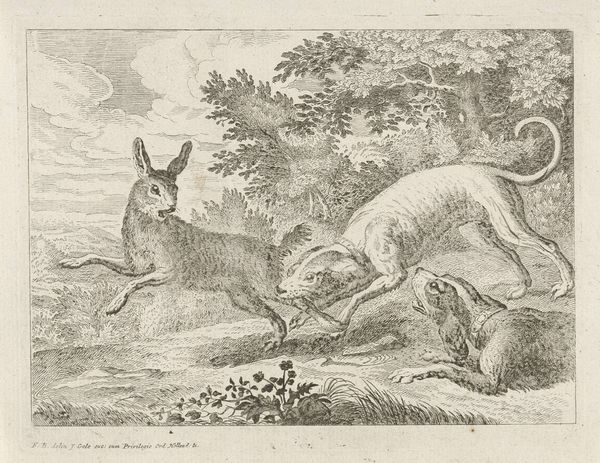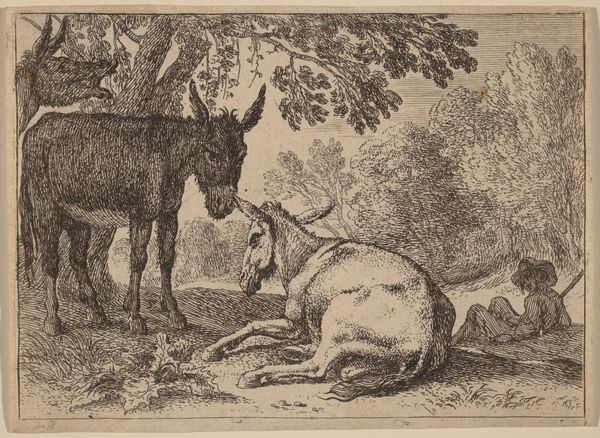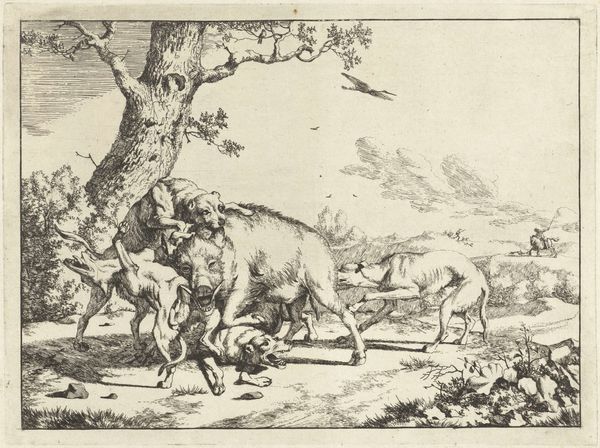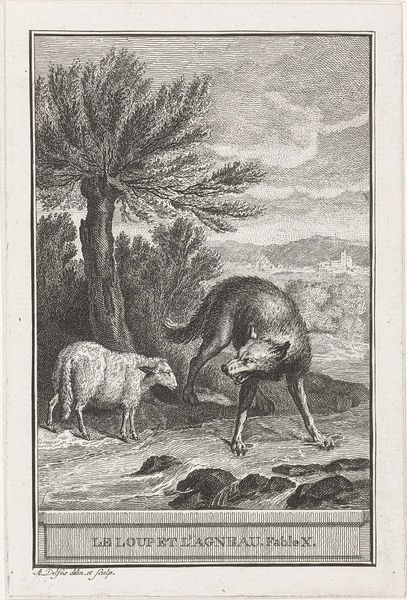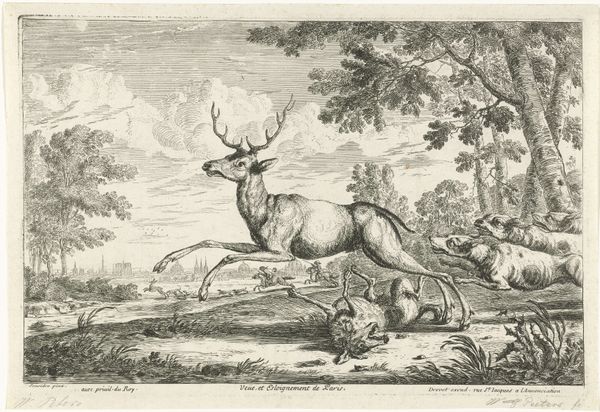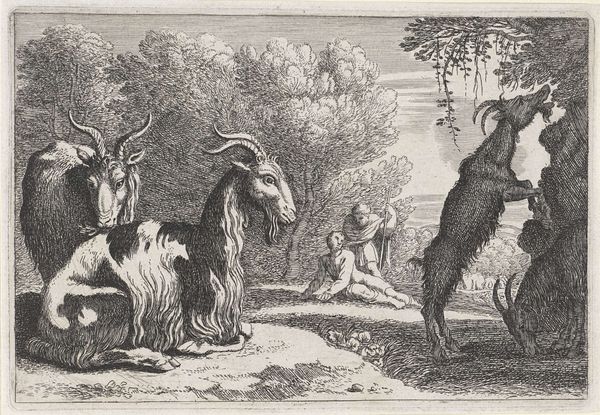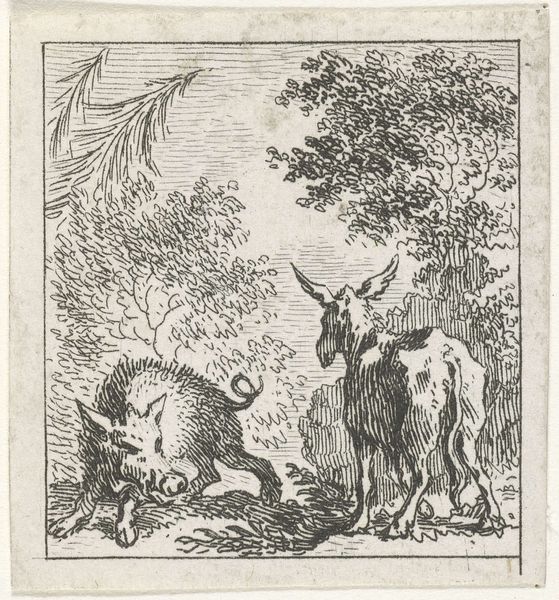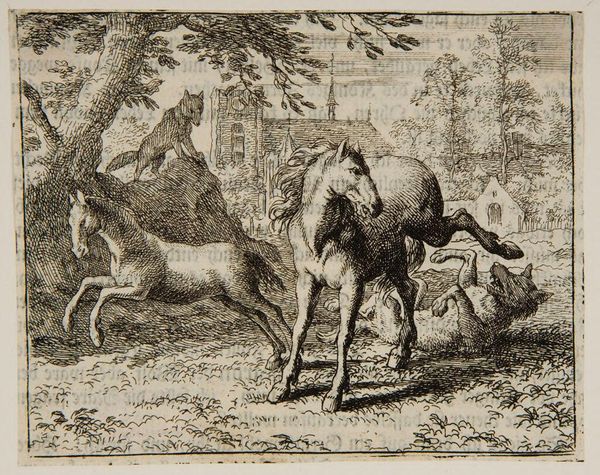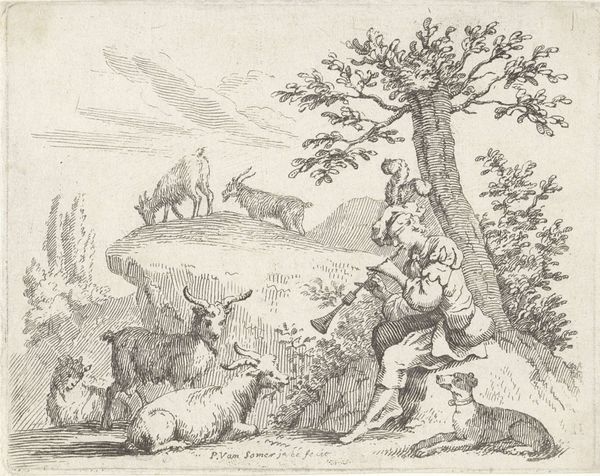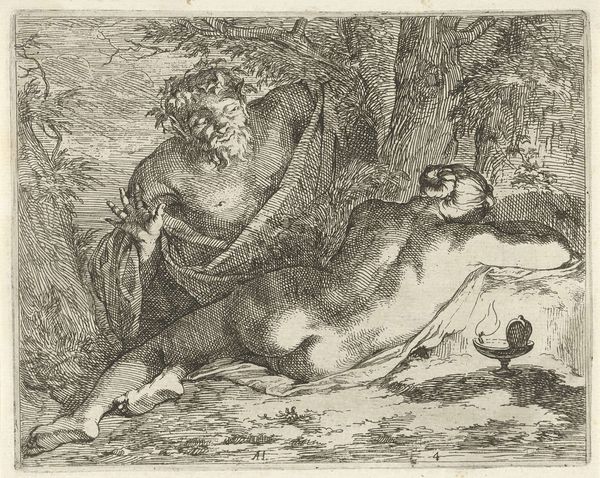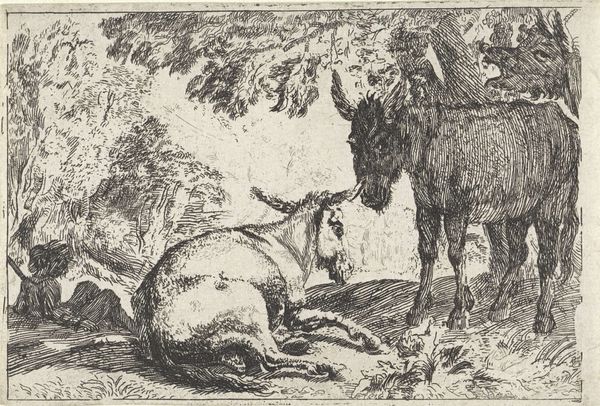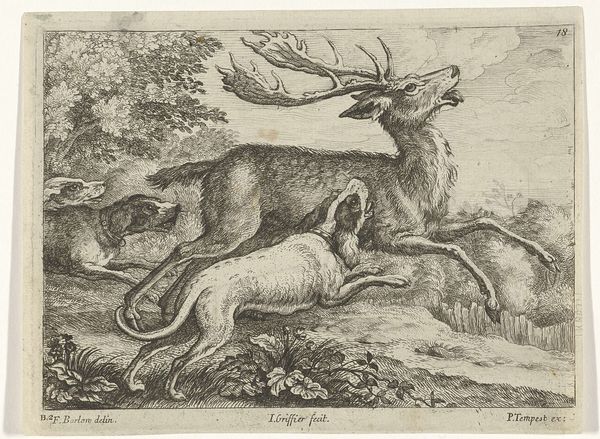
print, engraving
#
baroque
#
animal
# print
#
old engraving style
#
landscape
#
genre-painting
#
engraving
#
realism
Dimensions: height 113 mm, width 166 mm
Copyright: Rijks Museum: Open Domain
Curator: Here we see "Ezels," an engraving from somewhere between 1636 and 1705, currently held in the collection of the Rijksmuseum. Editor: There's something charmingly unassuming about this print. Two donkeys are the central figures, set against what seems like a meticulously rendered pastoral backdrop, all done in delicate engraving. Curator: Indeed. And observe how the anonymous artist captures the duality of donkeys in the period, representing both humble labor and bucolic life, reflective of larger cultural anxieties of city versus country. See how the figure of a shepherd blends into the scenery. The animal resting could represent an animal worn by work. Editor: You’re right; they carry that weight, don’t they? It reminds me how frequently donkeys appear in art as symbols of patience or stubbornness. Is that something we might be seeing employed here? Curator: Possibly. It’s also striking how the print balances realism with allegory. While the anatomical details of the donkeys are accurate, the overall scene feels imbued with a moral message. Genre painting was really beginning to develop here, becoming a reflection of middle class virtues of rural life. Editor: Yes, there’s definitely that hint of idealized simplicity at play. What's fascinating to me is how this seemingly simple genre scene might have operated within the print market of its time, what kinds of political messages this imagery may contain, and which social groups may have collected it. Curator: That's the core appeal of engravings like these: their democratic reach. Reproducible and collectible, prints like "Ezels" bring bucolic ideals into many households, subtly shaping cultural perceptions of landscape and labor. Editor: Looking closer now, it does have a surprisingly contemporary feel to it, doesn't it? These animals appear capable of suffering and capable of comfort; there's a distinct relationship shown here in just a few lines. Curator: The continuity of archetypes is startling, isn't it? What this work communicates is not merely an era but an enduring way humans continue to connect. Editor: So well said. It prompts me to think about what “ordinary” scenes from today will tell people hundreds of years into the future.
Comments
No comments
Be the first to comment and join the conversation on the ultimate creative platform.
